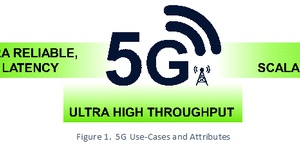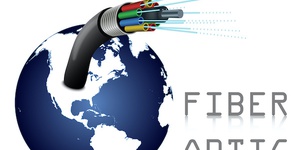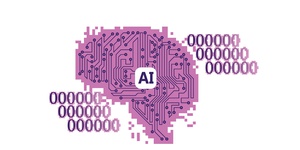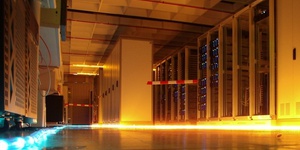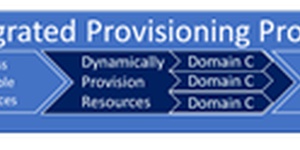This BLOG, written after Mobile World Congress, held in February 2019 in Barcelona, outlines some of the key learnings and trends in the Commsoft markets and provides snippets of my current view of future trends in important areas of evolution of the technologies and markets of Communications Service Providers (CSPs).
Communications Software (CommSoft) comprises:
- Business Support Systems (BSS) that provide business operations support (revenue management, customer management, partner management, and business governance),
- Operational Support Systems (OSS) that provide network support (service assurance, network engineering, resource and service provisioning, security, and network governance)
- Virtualized Network Functions (VNF) provided by software running on cloud infrastructure.
A full review of the state of CommSoft with my predictions is available as a part of the CommSoft Research Stream subscription service. Contact the author at mmortensen@acgcc.com or sales@acgcc.com for more information.
Leading-edge investment money is moving out of BSS and into OSS and NFV
We have seen CSPs moving investment money out of network operations and into business operations for the last decade as marketing departments have gotten control of budgets and focus turned on user experience and greater speed in introducing new services to both decrease churn and increase ARPU. This has resulted in a few percentage increases per year in BSS investments and a squeezing of the OSS budgets. Thet:e new investments in BSS functions are diffused into the market:: most CSPs have already invested in flexible and real-time billing systems (some specifically for enterprise customers, which represent a strategic growth market for CSPs). Already deployed at leading-edge CSPs are advanced customer management functions, such as adding a digital channel in an omni-channel architecture, AI powered customer segmentation, a 360° view of the customer and contextual next-best-offer and next-best-action functions. These functions are now going down-market into smaller CSPs. There is still interest and new focus on using network and service quality data in customer management.
My Take: Over the next five years, the larger leading-edge companies that have already invested, will move about half of their new project investment money out of BSS and into NFV and supporting OSS functions. However, the (mostly smaller) followers will double their investments in digital customer experience, next-best-offer and next-best-action, powered by AI, automation, and analytics features and functions in BSS systems. This will result in a few percentage movement of money out of BSS. Using network data in customer management will continue to expand but at a modest pace.
AI, automation, and analytics are solving significant problems by being combined
The automation of operations in network and business operations has been going on for nearly 50 years, but the maturing technologies in artificial intelligence, robotic process automation platforms, intent-based systems, and big data analytics are accelerating this trend tremendously. New use cases that combine these technologies (forming what I now call A3: AI, automation, and analytics) have proven themselves to be of tremendous value in increasing customer satisfaction and sales and in decreasing operational costs. But the increasing complexity of the networks and services is moving wide-scale automation from “good to have” to a critical necessity. Network slicing will make this even more complex in the future. The aim is a platform-based business with little human involvement in either business operations (which the customer directly controls) and network operations (which will happen autonomously in a “closed loop” manner).
My Take: This trend will continue and expand greatly over the next five years. The A3 technologies will permeate all the BSS and OSS systems. ACG Research will release two research reports in 2019 in a new A3 Research Stream. The first will provide my view of the landscape of A3 over the next five years. It will score the strength of current A3 use cases and articulate what technology advances are needed to strengthen the marginal ones. The second report will provide a roadmap of vendors’ offerings in A3.
Virtualized DSPs have exploded on the scene, lowering barriers to entry for new carriers
There have been over a half-dozen recent announcements of new mobile CSPs using a (nearly) fully virtualized infrastructure. These Virtualized Digital Service Providers (vDSPs) have exploded on the scene, significantly lowering barriers to entry for new carriers. Rakutan, Athonet Bubble Cloud, NNNCo’s N2N-DL IoT Platform, Emnify’s Clot Mobile Core Network, Etiya’s Virtualized Mobile Core Network, and others were announced recently.
My Take: These virtualized infrastructures and digital-centric customer operations, implemented in multi-tenant technologies and the managed services/SaaS models for BSS and OSS, can cut initial capex investment by x10 and personnel by x5. These lower entry barriers will power an explosion of new carriers and existing carriers’ second and sub-brands. Many of the existing 1,300 MVNOs will evolve into VDSPs over the next five years and the total number of VDSPs will double, including new second brands and sub-brands.
Edge computing will require management of the distributed applications
Edge computing looks like it will include CSPs’ computing platforms distributed throughout the network, end-users’ owned devices on the customer premises, and data center resources that the enterprises or CSPs use (their own or third-parties’).
Edge computing is touted as being useful for low-latency use cases, and many “blue-sky” demonstrations of these were shown at #MWC19, from geographically dispersed musicians playing together, remote surgery, network-connected cars, and remote-controlled drones, as well as the local caching of data and content to cut down on latency and reduce network usage. White-box computing environments coupled with virtualized software orchestration of software for the internal use of CSPs operations and for hosting virtualized environments for CSP provided functions, such as firewalls, also represent use cases for these. These more prosaic applications such as video and near real-time analytics for manufacturing QA or public safety seem to be more believable in the short term. Some true-believers also see this as an opportunity for CSPs to get into a low-latency part of the IaaS business (some entered the IaaS business in the past, though most have exited since it has become a near-commodity play).
My Take: There are some excellent low-latency use cases involving gaming and remote-controlled vehicles (but not autonomous vehicles), but these will take new partnerships that will be difficult for most CSPs to put together. Private use and CSPs providing white-box environments for CSP provided functions such as firewalls and for internal CSP operations will dominate for the next five years. New CommSoft functions will be required to manage and secure these distributed software environments, the applications themselves, and the users’ entitlements.




